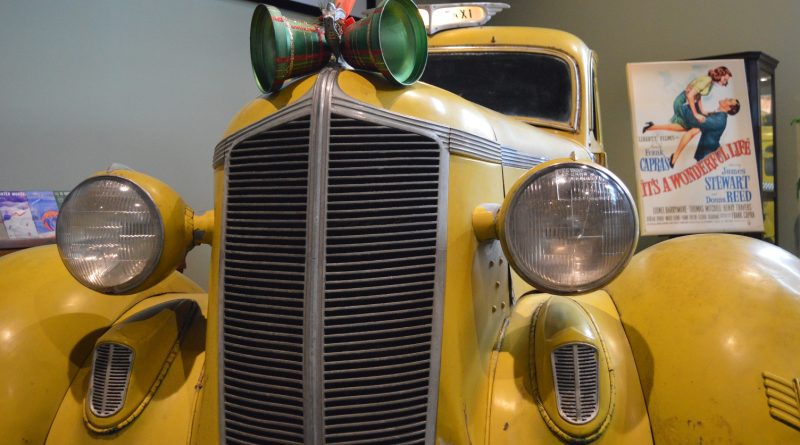It’s a Wonderful Life: DeSoto S-1 Taxied George Bailey Through Dark Bedford Falls
GETTYSBURG – If you google “Most Famous Taxis in Cinema History”, you’ll come up with a fairly short list which includes:
• “Taxi Driver” (1976)
• “Manhattan” (1979)
• “Taxi Express” (1998)
• “Collateral” (2004)
• “Taxi Tehran” (2015)
In each of the above listed films, taxi cabs are central to the action – not unlike Dennis Weaver’s sputtering Plymouth sedan in the psychological thriller Duel. But as a pivotal backdrop, few taxi scenes can compare to Marlon Brando’s “I could have been a contender” speech in On The Waterfront. Or Audrey Hepburn’s “…no matter where you run, you just end up running into yourself” epiphany in Breakfast at Tiffany’s.
For all of their horn-blowing and meter clicking, cabs have a unique way of moving a story along without being a central part of the story. So it’s rare that a cinema taxi sees a spotlight far beyond a film’s finale.
There is one cab, however, that is believed to have seen its share of spotlights in as many as 40 films. It’s not the nicest set of wheels, but as a pivotal backdrop, it’s pretty hard to beat. It’s the cab which shuttles a distraught man through an alternate reality ~ a dismal dimension bereft of his inestimable existence.
You are now entering Bedford Falls – and Ernie’s taxi cab from It’s a Wonderful Life.
“There were actually two different taxis in the film,” explained Jody Wilson, Director of Outreach at the WWII American Experience, where the cab is currently on display. “This is the second and more famous one. It’s the taxi Ernie drove as Clarence showed George Bailey how bleak life in Bedford Falls would have been, if George had never been born.”
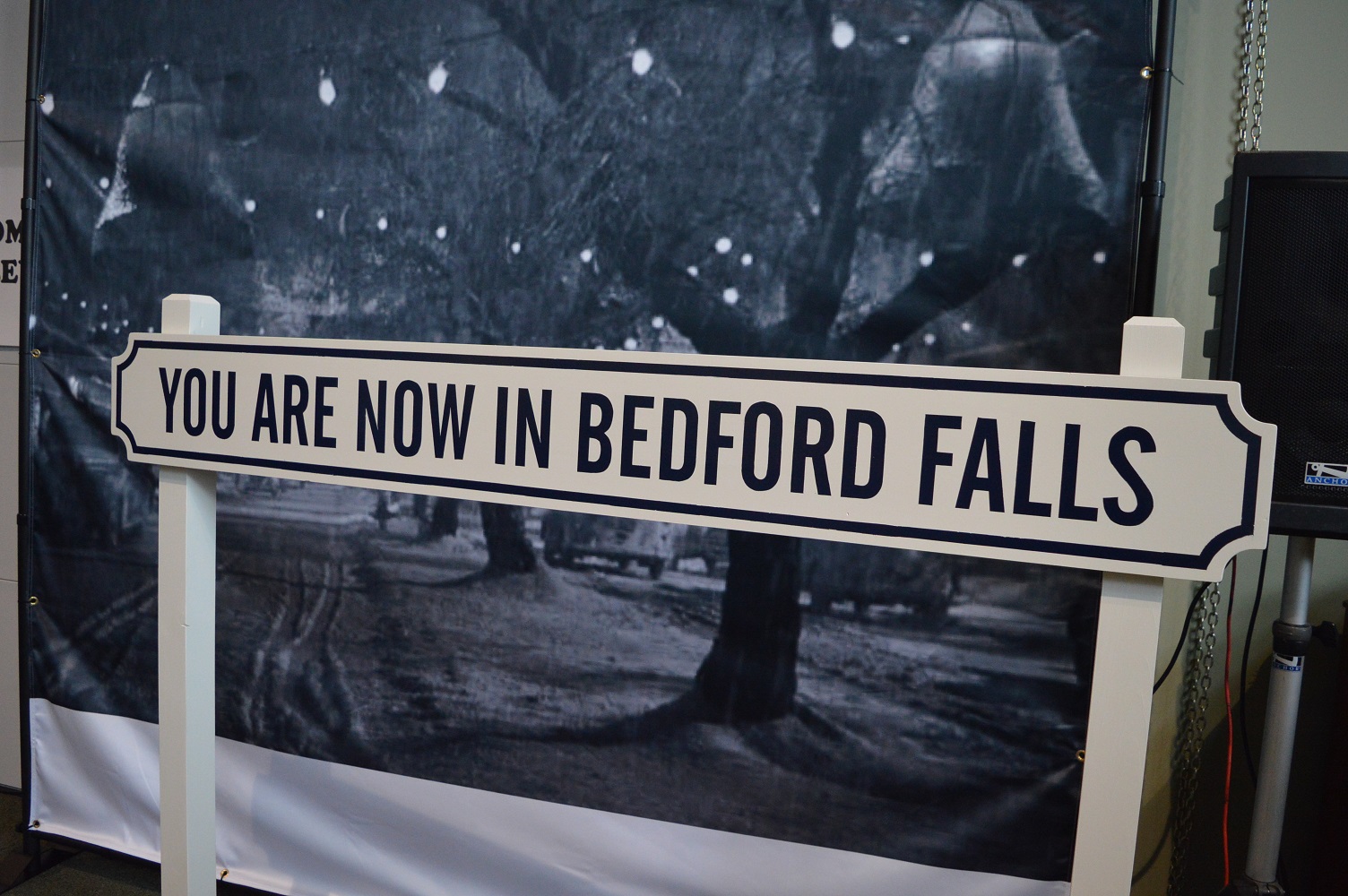
The taxi – a 1936 DeSoto S-1 Airstream Custom in less than pristine condition – is thought to have spent years in the stable of a Hollywood car rental firm. The vehicle was auctioned off last spring from the estate of Virginia-based car collector Mark Smith. A description of the vehicle from the auctioneer’s website reveals the following:
“The DeSoto Airstream was introduced for the 1935 model year and featured a much more traditional design than its sibling, the Airflow, which was polarizing and not completely well-received by the public. As a result, the Airstream was by far the more popular model and was offered in coupe, sedan, or convertible body styles.
“This S-1 Airstream Custom was believed by Mark Smith to be formerly the property of Pacific Auto Rental, the legendary Los Angeles-based film car rental company, and used in the filming of Miracle on 34th Street. The DeSoto still features the iconic yellow and checkerboard New York City Yellow Cab livery, an Ohmer fare register, and jump seats in the rear compartment. With a great deal of patina throughout, this Airstream has a lot of character and would be sure to attract ample attention once it is returned to the road.” (ClassicDriver.com)
We could not confirm that this cab appeared in Miracle of 34th Street. A frame-by-frame review of the movie actually left us in doubt, though it did confirm just how fabulous Maureen O’Hara looked. However, a DeSoto S-1 Custom was used in It’s A Wonderful Life, and – despite missing a few adornments – this cab appears to fit the bill.
“Pacific Auto Rentals was perhaps the most popular place for Hollywood studios to get their vehicles,” continued Jody. “It was like the Central Casting for cars, and that’s why this taxi is so special. And, unlike the taxi which appears in the early part of film – when George and Mary get married – this one enters near the end, in the most poignant part of the movie.”
Its pedigree aside, the taxi holds other special meanings for the WWII museum. For starters, the film was a favorite of museum founder Frank Buck.
“Frank loved Christmas and he loved this film,” said Jody. “Mark Smith had a huge, unique collection of mostly unrestored vehicles, but a lot of them are like this – from movies. Mark passed away quite unexpectedly, two years ago, but he knew this museum was in the works, and he was acquainted with the Buck family. He had already promised us that this taxi could come here during the holidays, because he knew it has a great connection to World War Two.
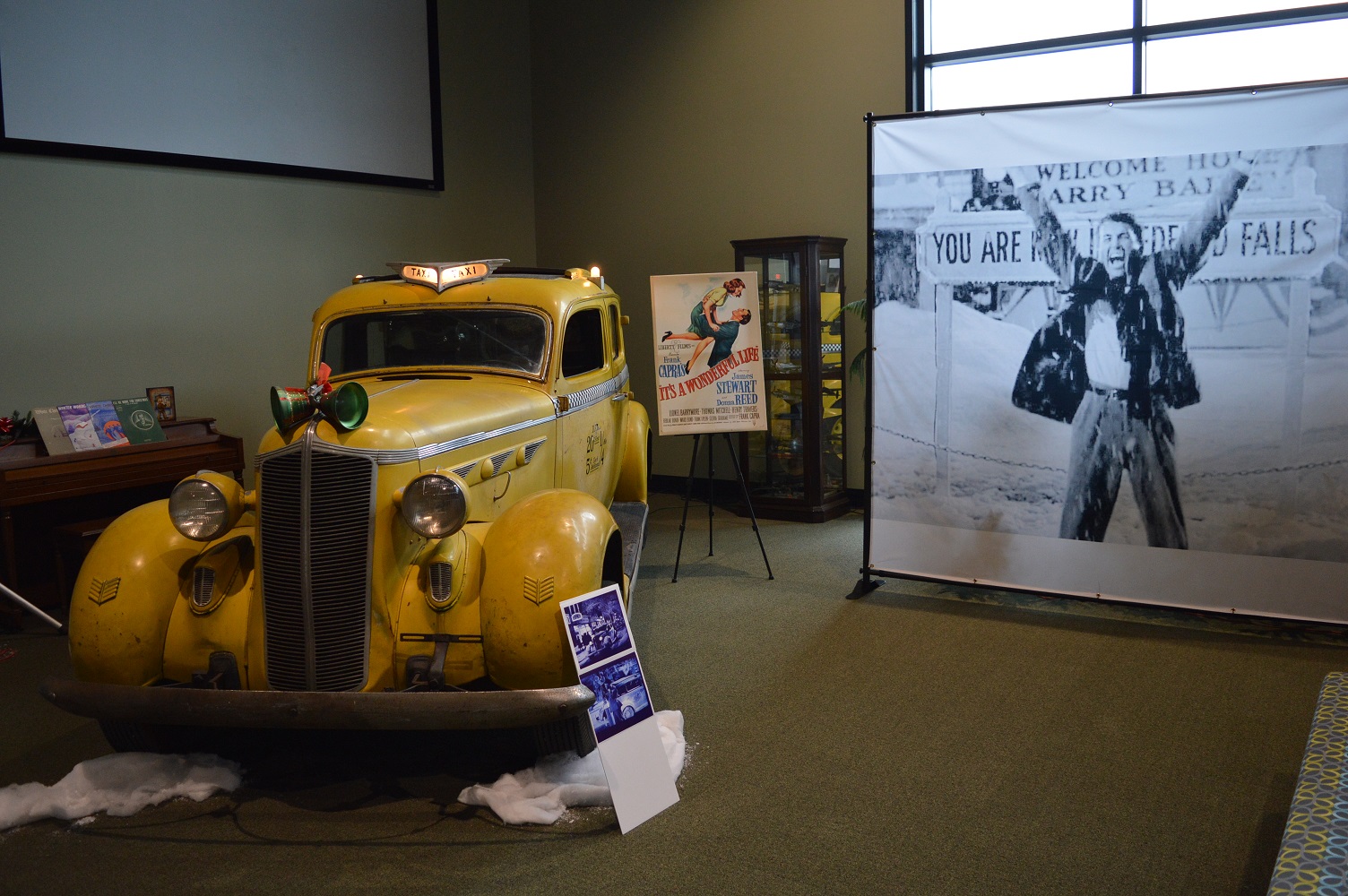
“After Mark passed away, all of his items went up for auction, which is, unfortunately, what happens a lot. And it was quite a large auction. So, Frank and his son, Adam (Buck) went down to try to purchase the cab for this museum. Another gentleman was there to purchase it too. He struck up a conversation with Frank and Adam, and said that, if he was the winning bidder, he would loan it to us to keep here for 10 years.
“This gentleman just visited his taxi a few days ago, and was very happy with the way it is being displayed. I could be wrong, but I think it’s going to be staying here a lot longer than 10 years.”
The cab’s condition, as noted earlier, doesn’t boast that showroom shine. It truth, it looks like one might expect an old taxi cab to look – a bit on the well-worn side. But that’s part of its charm.
“Packard” Dave Lockard – a volunteer docent at the museum, who has had his own experience with restoring old vehicles – said he didn’t believe the cab would ever be returned to “road worthy” condition.
“I think Frank had the engine turning over, but the general feeling was: This cab has done its time,” Lockard said.
Adam concurred, telling us, “My dad had it turning over, and yes, we certainly could make it a running vehicle again, but why bother? We’re pretty good at pushing it around now. So yeah, it might be easily restored, but with this kind of historic piece, you have to draw the line somewhere.”
Jody said that drawing a line by keeping the car “as is” actually helps the museum tell the taxi’s story.
“Part of the reason for leaving it “as is” is you can tell more about the cab’s history if you kept it in its present condition. We know, for instance, by looking under the hood, that the car has had at least three coats of different colored paint. You can also see different cab company decals on the doors. I think this one (pointing) might be from Miracle on 34th Street. See the silhouette of the buildings in New York?”
Yes! We could also see how cheap a ride was in 1940s New York.
Jody explained two other important reasons the relic connects both the film and its star to the WWII American Experience.
“Jimmy Stewart was a World War Two veteran who suffered with PTSD. So was Frank Capra – the film’s director. Capra dealt with a lot of fear after the war. So when Jimmy came back, he and Capra made this movie, and it really portrays life on the home front during the war.
“That’s what our museum is all about. The American Experience.
“Additionally, Jimmy Stewart was in the 445th Bomb Group. If you walk through our museum, you’ll see we have some items of a local veteran (Clem Leone) who was in that group with him. Clem was from Maryland, but he settled near here, in Hanover, Pa. He passed away last year, but we have his uniform and some other possessions, which is a nice connection to Jimmy Stewart.
“We have some other connections to the film, which fans might notice if they come for a visit. Like a 1919 Dodge touring car, which is very similar to the family car that gets wrecked in the movie. And of course, there is a scene where Mr. Gower and Uncle Billy are standing on a tank selling war bonds.
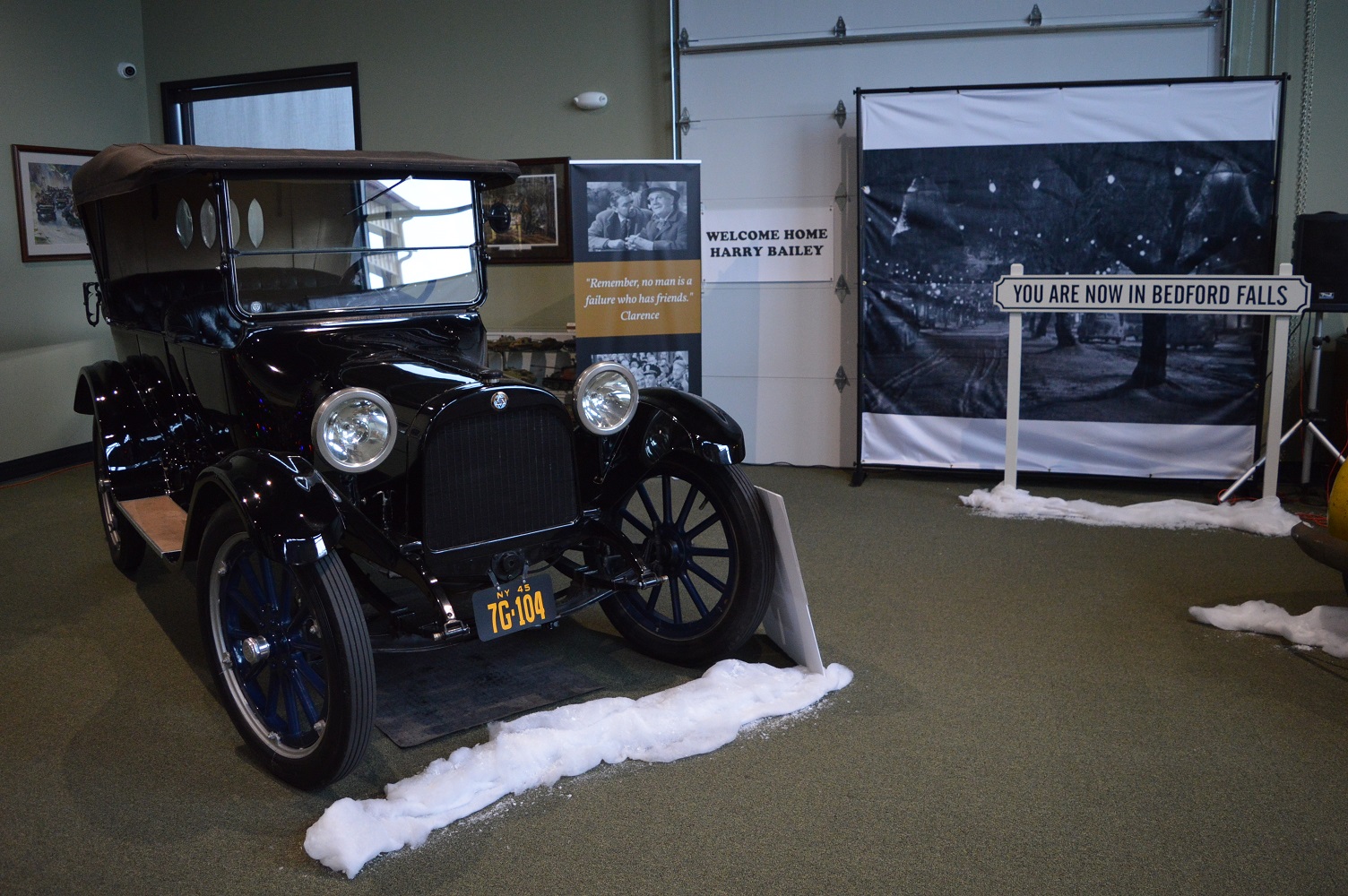
“Another thing fans can look for when they watch the film is that, when people returned from the war, they continued to wear items from their uniforms. It was right after the Depression, you know, and people used everything back then. In the film, when Ernie picks George up in his cab, he is wearing an Air Force shirt. So, we’re left to think that Ernie is a veteran who has recently returned to his job driving a cab.”
There are other connections that this reporter noticed, but why offer spoilers? Part of the enjoyment of a museum visit is discovering things not mentioned in publicity fliers.
Or in a news story like this, which – as much fun as it was to cover – must eventually give way to the closing credits.
One thing I will add for our regular readers is that this reporter was thoroughly wowed by what the Bucks have done with the museum, since I covered the soft opening back in 2022. I’m not sure how much time a docent like “Packard” Dave spends guiding visitors around, but the collection – which was impressive back in 2022 – is pretty amazing now. Plus, keep in mind that most of the vehicles on display actually run and are brought out regularly for demonstrations. You won’t need earplugs when “Packard” Dave is conducting a tour, but a pair might come in handy when they fire up the Sherman tanks.
The It’s a Wonderful Life exhibit was set to close right after Christmas, but it has been extended for now, to honor museum co-founder Frank Buck. Frank loved the cab; he loved the movie; but most importantly, he loved Christmas.
The WWII American Experience Museum is located in Gettysburg, Pa. Please check their website for more information.
* * * * *
EDITORS NOTE: It’s been said that the difference between men and boys is the cost of their toys. No one disagrees that Frank Buck’s favorite toys could be quite expensive. But what impressed us the most about Frank was his determination to share his vast and valued collection. That’s one of the reasons that Frank and his family founded the WWII American Experience Museum. And it’s a major reason why Frank Buck will be so greatly missed.
Frank died unexpectedly a few weeks back at the age of 81. His obituary may be found here, and it is well worth a read. Not only because it accurately presents a man so many knew and admired, but because it’s clear that in his time with us, Frank truly lived the American Dream.
Our sincere condolences to Loni, Adam, and the rest of Frank’s family and friends. We are glad we got to know Frank (and his welcoming smile) through our brief interviews and casual interactions at various militaria events. Not only was he always kind, Frank was one of a kind. And by any measure one can think of, he led a wonderful life.
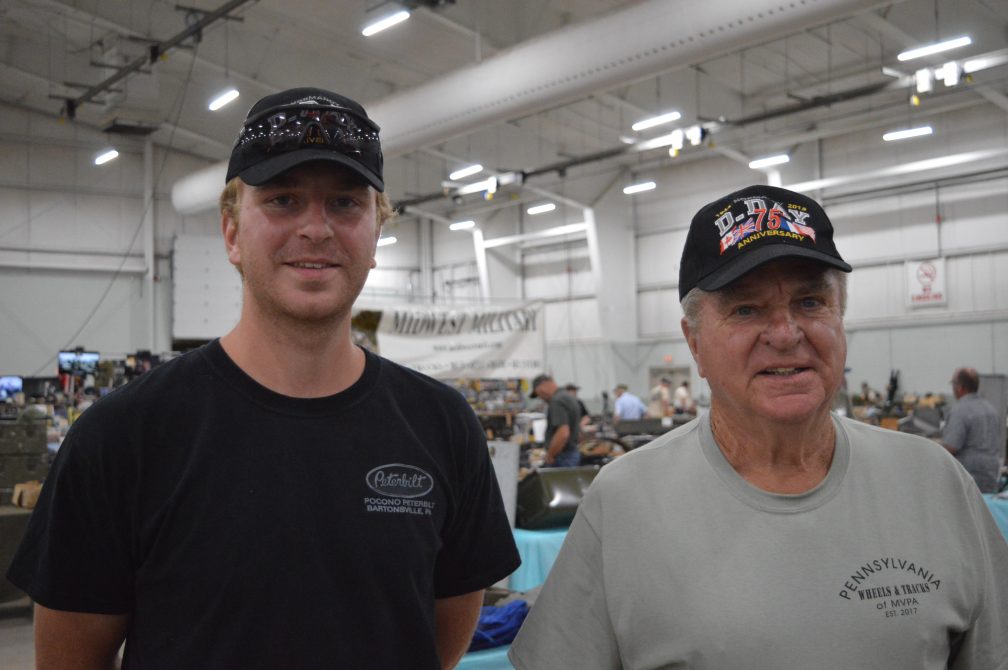
(Anthony C. Hayes)
Copyright 2024 Baltimore Post-Examiner. All Rights Reserved

Anthony C. Hayes is an actor, author, raconteur, rapscallion and bon vivant. A one-time newsboy for the Evening Sun and professional presence at the Washington Herald, Tony’s poetry, photography, humor, and prose have also been featured in Smile, Hon, You’re in Baltimore!, Destination Maryland, Magic Octopus Magazine, Los Angeles Post-Examiner, Voice of Baltimore, SmartCEO, Alvarez Fiction, and Tales of Blood and Roses. If you notice that his work has been purloined, please let him know. As the Good Book says, “Thou shalt not steal.”

